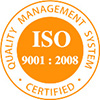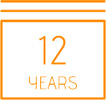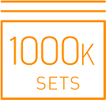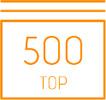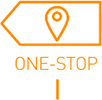FREQUENTLY ASKED QUESTIONS
1. Why is it needed for the concept models and functional prototype?

Concept models are the first tangible representations of your ideas. They communicate your early design concepts in a way that sketchpads, rendering applications and CAD cannot. Concept models are great for evaluating size, shape, style and configuration and accessing an idea’s appeal, performance and manufacturability.
Concept models are short-lived but valuable in bringing your ideas to life. It’s important to keep the conceptualization process moving and ideas flowing. To accelerate the process, you can have multiple concepts produced at the same time and then select the best from a side-by-side comparison.
Functional prototypes let you discover performance issues and correct them before you invest in product documentation, tooling and manufacturing. These prototypes help you evaluate an assembly’s function and performance in its intended environment, whatever that may be under the hood, in flight, under water, in the home or even in the surgical theater.
2. What are the differences in various rapid-prototyping processes?

Most rapid-prototyping (RP) processes involve the building of a model in layers. When a CAD file is input into the software controlling the rapid-prototyping machine, it calculates the profile and area of each layer, and then duplicates the layer in the RP machine.
Generally, the major difference is in the material used to create the models. SLA (Stereolithography) uses liquid polymer resins and cures them into solids with ultraviolet rays. FDM (Fused-Deposition Modeling) lays each layer with strands of near-molten ABS or PC, and SLS (Selective Laser Sintering) uses a CO2 laser to fuse powder based materials together to create a solid prototype.
3. How is CNC machining different from other rapid-prototyping processes?

Unlike the building of layers in other RP processes, CNC machining cuts away at a solid block of material to create the final model. The material used in CNC machining can range from soft materials like foam and plastic to hardened steel. Therefore, it is by far the best method for functional testing of prototypes when actual materials used for eventual mass production are utilized during the machining.
4. What are the advantage of CNC Prototypes comparing with SLA and SLS prototypes?

1) CNC Prototyping material is various, that will be exactly or very close to the designers intending material.
2) CNC will be not constrained by the size of the parts.
3) CNC is workable for the metal parts.
5. Why opt CNC machining prototype, instead of SLA/SLS'

CNC milling is an ideal way to turn your CAD design into a three dimensional prototype, because of its accuracy and solid production of prototype building.
Prototypes can be made by 3d printing as per CAD design, which is sometimes cheaper too, but with CNC machining the method is different to produce the sample of your final product. Additive prototyping technologies is to create a mock-up through layering is practically cheaper and is of quicker of production.
Many still opt for CNC machining instead because of the solid structure and accuracy. Also the final structure looks like it is real injection molded or casted, mass manufactured. Your designed parts for additive machines or prototype machines can be produced through CNC machining. CNC machining allows customers to have a prototype produced out of the real material instead of a photopolymer or polyamide simulant.
6. How does CNC machining work?

CNC machines automate the work done by machine tools such as mills and lathes. CNC machines are programmed using computers and sophisticated CAM (computer assisted machining) software that replace manually-operated hand wheels or levers.
CNC machining centers can process a large range of ferrous and nonferrous metals and plastic materials.
The raw material is loaded into the machine and held using a vice, chuck or fixture. Once the material is secure and the machine is activated, the cutting tools remove excess material and give the final part its shape.
7. Why select MPP process for your prototypes?

MPP(Manufactured Plastic Prototypes) is a subtractive rapid prototyping fabrication process for creating plastic prototypes. The plastic material is removed from a solid block by Computer Numerical Control (CNC) equipment that cuts away the unwanted material.
The MPP process is offered for 3 production plastics – ABS natural, ABS black and Acrylic clear. Unlike traditional rapid prototyping processes, the MPP material is a production grade plastic that is durable enough for end-use applications.
MPP offers a more functional prototype part than any of the rapid prototyping processes available. This is due to the process of removing material from a solid block of production grade plastic rather than creating the part through an additive manufacturing process.
Manufactured Plastic Prototypes Highlights
Production quality materials allow for stronger more accurate parts.
Better accuracy than rapid prototyping.
Smooth surface finish eliminates stair stepping seen with rapid prototyping processes.
8. What are the advantages of CNC Prototyping?

The repeatability, accuracy and speed of 101 CNC machines make them an excellent choice for manufacturing functional prototypes and production parts. CNC machining is the next step from prototype to production.
101 CNC prototyping services – 5-axis CNC
101 has a range of CNC machining options, including 3, 4, and 5-axis CNC metal-working processes. Our 5-axis CNC machine can produce complex three-dimensional shapes, such as turbines and impellers, rapidly and in a single set up.
Our CNC lathe is great for heavy-duty cutting of large cylindrical parts. The live tooling option easily adds in slots, grooves and other complex features.
We recommend CNC machining for metal prototypes and low-volume production.
CNC prototyping provides multiple material options and can be used to produce the simplest to the most complex parts.
CNC prototyping for models and end-use parts from virtually any thermoplastic.
9. What are the disadvantages with CNC machining?

In essence, the only disadvantage of CNC machining compared to other RP processes is in the lead-time. Since CNC machining involves CAM programming, much time is spent programming toolpaths- the more complex a part is, such as deep 3D surfaces, bosses and snap details, the longer it takes to program. Also, if materials harder than plastics are used, longer periods of machining time are required. An item such as a cellphone requires only a few hours on an SLA machine, but may take up to a full day to complete with CNC machining. However, with the quality and accuracy of the prototypes produced, this is only a minor inconvenience.
10. What are other benefits of CNC machining?

The most evident advantage is the tolerance and accuracy exhibited by CNC machines. The paths taken by the tool bits do not have to follow a 2D profile like other RP processes. For example, it can cut away at a material up and down a sloping profile in any degree specified. Each cutting path can also be programmed to be as close as 0.1mm apart (in comparison, SLA creates only horizontal layers of 0.25 mm at best). The implications are profound- CNC parts require little or no secondary finishing work, and parts fit together the way they are designed.
In addition, CNC-machined prototypes are excellent for creating true-to-life models. They can be spray-painted or electroplated (when ABS or metal is used). Since the models are similar to final production parts, they can also be used to verify other production and assembly methods such as sonic-welding.
11. With the benefits in CNC machining, why is it not as common as other RP processes?

Unlike CNC machining, the entire prototyping process in other RP methods is controlled by the machines and their software. It is efficient without much human input, and models are created quickly and predictably. They can be operated in an office environment, as they are 'clean' in their processes, without generating dust, particles and waste typical in CNC machining. Therefore, most companies in the U.S. prefer the use of these modern RP methods in creating prototypes.
CNC machining, on the other hand, is a more traditional prototyping method. It requires plenty of care and expertise in order to create good prototypes. Factors like CAM programming- such as the types of milling bits to use, travel and spindle speed for cutting different materials, methods to reach undercuts and various other issues have to be controlled by experienced machinists and programmers with years of training specific to CNC prototyping.
Along with the transfer of most production and assembly of consumer and industrial products to countries with lower labor costs, the tool and die industry which supplies CAM programmers and machinists is gradually dwindling. This is perhaps the main reason for the shortage of CNC machining in America. 101 CNC machining factory locates in China.
12. Can I specify special materials for CNC machinging?

The following material and surface treatments is usually used on CNC milling prototype. If any other requirements, please email your request and detailed information to: 101id@101id.com or visit our contact page.
Plastic material:
Acrylonitrile Butadiene Styrene ( ABS )
Polyethylene (PE)
Polyoxymethylene ( POM)
Polypropylene (PP)
Polyamide (PA, Nylon)
Acrylic ( PMMA )
Polycarbonate (PC)
Polyvinyl chloride ( PVC )
Phenolic
PTFE (Teflon)
Ultem
Noryl
Metal Materials
Aluminium
Carbon Steel
Stainless Steel
Zinc
Red Copper
Brass
Bronze
Copper ( Cu )
Mild Steel
13. What's the common surface treatment solution on Prototypes?

Painting (Plastic Painting, Metalic Painting, Rubber Oil Painting )
Anodizing (Clear Anodizing, Color Anodizing )
Polishing
Plating
Silkscreen
Sandblasting
Laser Carving
Wiredrawing
Spray UV
14. What determines the quality of prototypes?

The quality of the prototypes created is dependent on the thickness of the layers created (the thicker it is, the less accurate) and the properties of the material used (dimensional stability, reflection of actual material etc.) SLA creates somewhat fine and accurate layers, but the resins are susceptible to shrinkage and warpage over time. FDM parts have better dimensional stability, but the surfaces created are less refined due to the thickness of the ABS strands laid. SLS creates rather porous models due to the powder based material it uses. In addition, the materials used in typical RP methods are only approximate to the actual materials used in production.
15. How do I know if CNC machining is suitable for my application, and will it cost me an arm and a leg?

If you want a prototype that is as close a reflection to the actual production part as possible, then CNC machining is definitely the choice. However, if all you require is a prototype for general design verification, then other RP processes with shorter turnaround times are probably more suitable. It is important to note that SLA parts require much more hand finishing (post processing) to create a part. Small details or features are easily sanded down or completely removed during this process. Parts which are CNC machined require very little to no post processing, so small features stay on the part and do not end up as dust on the floor.
It is difficult to gauge the cost of your part without reviewing the design. A simple 2D machining of a flat piece of material can be cheaper than SLA, whereas a part with plenty of details can be twice as much. Unlike other RP methods where cost is calculated at the prototyping time and amount of materials used, cost for multiples of the same part for CNC machining is discounted, as time is saved in CAM programming. Send us your file or images, and we'll gladly send a quote right away.
16. What's 101 Advantages on CNC machinging prototypes?

Geographical Position: The company is registered in CA, USA, and the factory is Shenzhen, an important manufacturing basis in the world. It is both near to Hongkong and Shenzhen Baoan International airport.
Professional Team: More than 20 experienced professional designers, around 80 skillful Engineers and Technicians on plastic and metal prototypes. All of our CNC operators have undergone further training in-house.With 12 years experience in Prototype Manufacturing, we provide thoughtful service. Choose the most reasonable processing method to make the prototype.Manufacture according customer’s design completely and provide the most accurate reference.
Engineering Support: If the customers have only sketch or picture of products, we can provide the service on Industrial Design and Mechanical Design. Come true the idea to products. Accordingly the mock-up and functional prototype can be workable.
Professional Project Management: Every project will be managed by a professional PM. The project will be run smoothly and successfully.
High Quality: 101 utilizes a rigid quality control system. Important elements of our quality programs include the integration of statistical process controls, machine capability studies, a computer-aided coordinate measuring system, incoming inspection routines and traceability of materials requirements. Our experience, expertise, and in-depth knowledge of processing metal and plastic materials utilizing the latest in techniques serve a variety of different industries.
Most Competitive Price: The labor cost is competitive in China mainland. High efficiency lowers the cost.
Equipments: More than 30 CNC machines, milling machine, laser cutter, bending machine dedicated to prototyping.
Flexible Service Time: We are reachable 24hrs by 7days either by phone, email, MSN, etc.
Delivery Time: Production of CNC machined prototypes typically takes one to ten days, this depends on the technology used and the geometry of the model.
Confidentiality: The NDA (Non-disclosure agreement) will be signed and the IP is well protected.
Prompt Delivery: By express or air-shipment, the goods will be ETA as expected time schedule.









